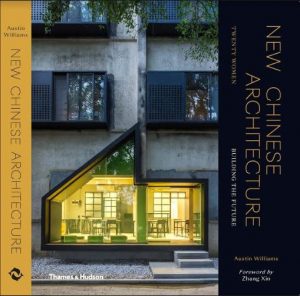Dumbed Down Design Education
by Austin Williams
 What is happening to architectural education is insane. It is all the more deranged given that it is being orchestrated by the very body with the mandate to protect it. The Architects’ Registration Board has just launched a consultation to formally end its part 1 undergraduate degree programme and replace it with… who knows what.
What is happening to architectural education is insane. It is all the more deranged given that it is being orchestrated by the very body with the mandate to protect it. The Architects’ Registration Board has just launched a consultation to formally end its part 1 undergraduate degree programme and replace it with… who knows what.
Imperiously, it states “We will announce changes when we are ready to introduce them”, indicating – Rachel Reeves style – that even though it has already started dismantling the institutional frameworks, it doesn’t have much of a clue what to replace it with. It’s decided to Ask the Audience in another one of its interminable consultation procedures that usually elicit responses from a tiny minority of interested parties. The ARB then waves these results about as if providing “democratic” proof of the need for its autocratic and meddling existence.
Clearly, the ARB’s latest interference is designed to appeal to those students who think – rightly, of course – that university fees are extortionate. Instead of logically campaigning for student fees to be reduced or abolished, they choose the easier answer: dumb down education by slashing the amount of time you need to study.
Architecture is usually taught in three phases: Part 1 (the 3-year undergraduate programme) and Part 2 (the 2-year Masters programme). There is usually a year-out between these programmes where the student works – preferably in an architect’s office – or decides that the subject is not for them. After Masters, the final year of employment is often concurrent with the final professional programme, Part 3. This adds up to 7-years of educational development and, even though these qualifications are theoretically still accredited until December 2028, the ARB panjandrums believe them to be too costly and demanding and has begun slowly to dismantle them.
It’s ironic that in the 1970s, when education was free, fewer than 14% of school leavers went to university. Nowadays, when it costs nearly £10,000 a year, more than 40% of young people start undergraduate degrees.
Of course, for international students, the sums are even more exorbitant. It costs £38,000 per annum for an international student to study architecture at say, Cambridge university, with an additional £13,500 college fee every year if you study at, say, Gonville and Caius. Campaigning meaningfully against the extortionate exploitation of foreign nationals is not given a second thought, given that universities are financially propped up by this imported booty. If there was no financial sweeteners, the best international students might then be chosen on merit alone, rather than every applicant glibly accepted as cash cows.
Domestic students are also penalised financially for having the temerity to want an education. It is common these days to meet Master students who work 3 or 4 days a week while studying “full-time”. As a result of its own corrosive polices, the ARB now says it will recognise term-time working as part of official work experience. No-one seems to care about what they are learning, but when chasing the money, all too easily integrity is compromised.
Unsurprisingly, I’m told that students regularly complain that they have no time to study because they are busy working. For some students, university attendance is an inconvenience. Consequently, many schools spend their time apologising: studio teaching is often packed into one day, departmental lectures are offered online, deadlines are spread out to ease students’ “stress”, and hand-in dates are now provided with an official 24-hour grace period (meaning that late hand-ins are allowed: a particularly irresponsible professional lesson to learn).
“The student experience is important to us” says the marketing material… unless the student misses a payment, of course, in which case they are booted out of the door. And heaven forfend if you bully – I mean, criticise – someone! After all, the customer is always right, and who wants to sit through the relentless complaints process?
So, the ARB decides to legitimate this dumbing down of architecture by slashing its courses to pander to these perceived realities. The real irony is that the ARB argues that this is in the name of “competency”. Say it often enough and we’ll never have to worry about the growing levels of uncertainty, risk-aversion, confusion, unprofessionalism, and dare I say it, bewildered incompetence prevalent in the profession today.
The ARB is now suggesting that, instead of 3-years of undergraduate education, all the regulator will require is a “CV and written reference from a registered architect verifying that the applicant has been working in the architecture sector on relevant work for at least the last two continuous years”. It continues: “whilst this cohort of applicants may not have the cumulative years of experience and the foundational teaching of concepts associated with a Part 1, they have already applied the same competencies to a more demanding level in gaining their Part 2 qualification”. That’s alright then. Imagine signing up for a Part 1 degree in 2025 and reading the ARB’s dismissive description of the apparent pointlessness of your course.
In truth, we should remember that architecture is more than just the ability to tick-box a list of so-called “learning outcomes”. It is actually about the intelligence to critique, to dissect, to understand. It requires an understanding of design parameters, of course, but you have to learn the ropes. Architecture ought to provide a rare opportunity to study a subject that opens your eyes to so many other issues: sociology, politics, art, history, philosophy, engineering. technology, etc. Taught properly, it allows students to understand how things are put together well, which can be applied to an appreciation of film, music or of literature as much as architecture. It is – or used to be – the quintessential liberal art.
Nowadays, however, the ARB has borrowed a tool from clinical practice and applied it to architecture to “demonstrate” its value. Those who have read “Competency Outcomes for Architects” will probably find it almost unintelligible. One of the mandated outcomes, insists that students “display a committed approach to equity, diversity and inclusion” which might even be an illegal demand compelling someone to act against their actual beliefs
Regardless, the ARB will continue to claim the elite right to tell us what to do. Worse still, it will continue to be oblivious to the fact that it is presiding over a profession in decline, caused in large part by its own hand.
.






